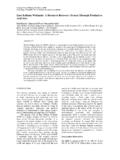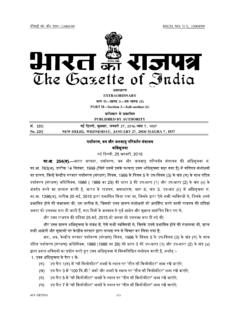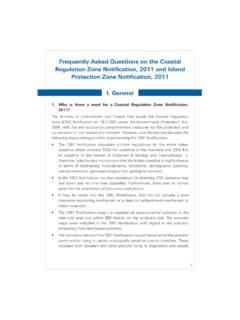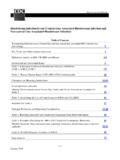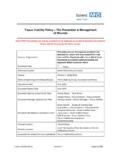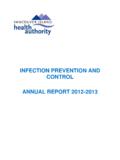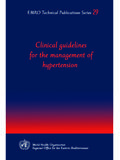Transcription of PREVENTION AND CONTROL OF POLLUTION
1 5 PREVENTION AND CONTROL OF POLLUTION [Industrial POLLUTION Abatement through preventive strategies, Development and Promotion of Cleaner Technologies, Taj Protection Mission, Environmental Health, Noise POLLUTION , Air POLLUTION , Vehicular POLLUTION CONTROL , Industrial POLLUTION CONTROL , Common Effluent Treatment Plants, Zoning Atlas, Establishment of Environment Protection Authority, Central POLLUTION CONTROL Board, Hazardous Substances Management] The enhanced pace of developmental activities and rapid urbanization have resulted in stress on natural resources and quality of life. The trend of increasing POLLUTION in various environmental media is evident from the deteriorating air and water quality, higher noise levels, increasing vehicular emission etc.
2 Realising the urgent need for arresting the trend, Ministry adopted policy for Abatement of POLLUTION which provides for several mechanisms in the form of regulations, legislation, agreements, fiscal incentives and other measures to prevent and abate POLLUTION . Further, realizing that conventional POLLUTION CONTROL approach by treatment at the end of the pipe is not delivering the desired benefits in terms of resource conservation, the thrust has been shifted to POLLUTION PREVENTION and CONTROL through promotion of clean and low waste technology, re-use and recycling, natural resource accounting, Environmental Audit and Institutional and Human Resource Development. To give effect to various measures and policies on ground, multi-pronged approach is adopted which includes stringent regulations, Development of Environmental Standards, CONTROL of Vehicular POLLUTION , preparation of Zoning Atlas for Spatial Environmental Planning including Industrial Estates etc.
3 Major activities carried out under several programmes/schemes during the year are as follows : Industrial POLLUTION Abatement through preventive strategies This scheme is an amalgamation of the three on-going schemes viz. Environmental Audit, Adoption of Clean Technologies in Small Scale Industries and Environmental Statistics and Mapping, which have been continuing since eighth Five Year Plan. Due to encouraging results and benefits to various small scale units, these schemes are being continued during the 10th Five Year Plan also: Environmental Statement (As a part of Environmental Audit) Environmental audit is a management tool and provides a structure and comprehensive mechanism for ensuring that the activities and products of an enterprise do no cause unacceptable effects on the environment.
4 Submission of an Environmental Statement by polluting units seeking consent either under the Water ( PREVENTION and CONTROL of POLLUTION ) Act, 1974 or the Air ( PREVENTION and CONTROL of POLLUTION ) Act, 1981 or both and the Authorization under the Hazardous Wastes (Management and Handling) Rules, 1989 has been made mandatory through a Gazette Notification of April, 1993 under the Environment (Protection) Act, 1986. The Environmental Statement enables the units to undertake a comprehensive look at their industrial operations and facilities, understanding of material flows and focus on areas where waste reduction and consequently saving in-put cost if possible. The primary benefit of environmental audit is that it ensures cost effective compliance of laws, standards, regulations, company policies etc.
5 During the year, action has been initiated to evolve model environmental statements in various sectors for facilitating comparison in use of raw material, water conservation, energy consumption etc. A project has been sponsored to Central POLLUTION CONTROL Board for evolving model environmental statement in the eight sectors viz. Sugar, Thermal Power Projects, Cement, Paper and Pulp, Pesticides, Bulk Drugs, Tanneries and Textiles Activities. Waste Minimisation/Cleaner Production Waste minimization is one of the strategies adopted for minimizing the industrial POLLUTION . The objective of the scheme is to assist the small and medium scale industry in adoption of cleaner production practices. A project has been sponsored to National Productivity Council on Waste Minimisation in Small Scale Industries for establishment and running of waste minimization circles in clusters of small scale industries, capacity building in areas of cleaner production, establishment of demonstration units in selected industrial sectors etc.
6 So far 115 waste minimization circles have been established through out the country and a large number of Organizations and Institutions have been trained in waste minimization activities. The project was executed till November, 2002 under the World Bank project on Industrial POLLUTION PREVENTION (IPP) as Phase-I and Phase-II is now being continued with Ministry s internal funds. Implementation of this project has helped in identification of more than 200 options for resource and energy conservation in various small scale industries. Environmental Statistics and Mapping For sound Environmental Management, reliable information base and the mapping of areas needing special attention for POLLUTION PREVENTION and CONTROL are a pre-requisite. As a step in the direction, projects and pilot studies have been initiated through various research institutions and organizations.
7 Under this program, following studies have been initiated and are in various stages of completion : - GIS based Hydrological Modelling for Water Quality and Quantity in Cauvery River Basin by IIT, Delhi. - Geochemical baseline Mapping for Environmental Management by National Geophysical Research Institute, Hyderabad. Development and Promotion of Cleaner Technologies Life Cycle Assessment (LCA) Life Cycle Assessment is a decision cum management tool which provides information on the environmental effects of various products and processes so as to arrive at necessary corrective measures to make the entire process efficient with optimal utilization of resources and minimal wastes generation. LCA studies have been initiated in various sectors namely; Steel, Pulp and Paper and Thermal Power.
8 The study in the Steel Sector was completed earlier and the report is under preparation. The study relating to the Thermal Power Sector has been completed during the year while the study in the Pulp and Paper Sector is progressing as per schedule. Industrial Ecology Opportunities in Ankleshwar and Nandesari Industrial Estates, Gujarat A study was undertaken to develop and implement Industrial Ecology Opportunities in Ankleshwar and Nandesari Industrial Estates of Gujarat. The study has examined technologies used by industries in this region and suggested possible approach to achieve eco-efficiency within the industrial estates to reuse and recycle wastes and effluents generated from different industrial units. The recommendations of the study have been discussed in a workshop with all stakeholders including State Government Agencies for their implementation and an Action Plan is being drawnup by them.
9 Development of Market Based Instruments for Regional Environmental Management in the Kawas-Hazira Region in Gujarat The ongoing project on Development of Market Based Instruments for Kawas-Hazira Region of Gujarat has been completed. The study report has observed that the taxes and incentives based on efficiency improvements align the POLLUTION CONTROL agencies better with the polluters than the Command and CONTROL (CAC) regime. Such an instrument also facilitates prescribing incentives for achieving the triple bottom line, viz economic-efficiency, environment-responsibility, and social-relevance entitling the Corporate to Clean Development Mechanism (CDM) and other cleaner-production benefits. The recommendations of the study have been discussed in a workshop with all concerned.
10 Field Demonstration and Development of Bamboo Based Composites/Panels The ongoing project on field demonstration and development of bamboo based composites/panels was continued during the year. Under this project, commercial production of horizontal and vertical laminates have been made using Bambusa bamboo Species. Construction of demonstration houses will be taken up during the current year. Recycling of Marble Slurry in Udaipur, Rajasthan A two years duration project has been sponsored for the manufacture of bricks and tiles from marble slurry in Udaipur, Rajasthan with the aim of utilizing wastes arising out of marble cutting and processing for the purpose of improving the local environment. Bio-remediation of Railadevi Lake in Thane, Maharashtra A project relating to cleaning of Railadevi Lake in Thane District in Maharashtra using bio-remediation technique has been sponsored to Thane Municipal Corporation.

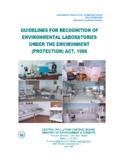
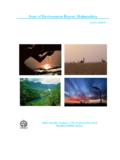
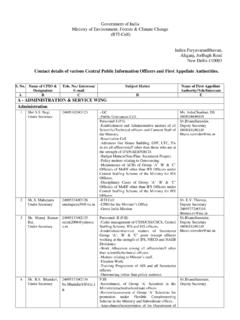
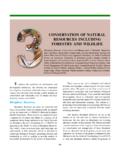
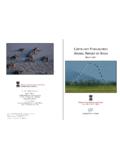
![Untitled-1 [www.moef.nic.in]](/cache/preview/0/7/5/4/5/e/c/5/thumb-07545ec5a24fcdf0c4f7836434cadcc8.jpg)
